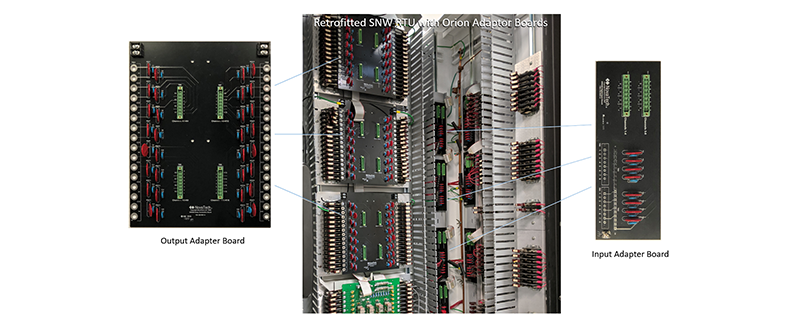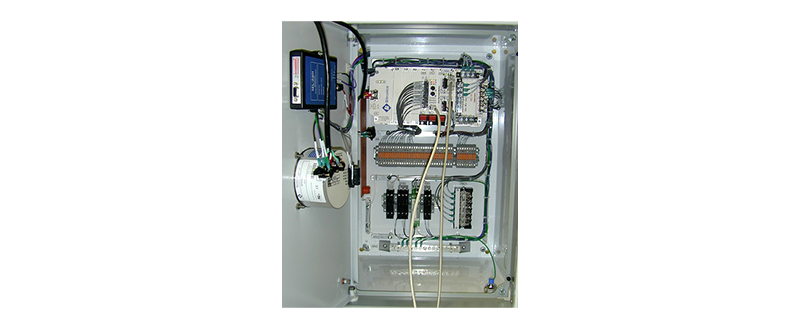
SCADA Implementation, Simplified
PUBLISHED ON Nov 17, 2020
Web-based Supervisory Control and Data Acquisition (SCADA) solutions deliver a new level of simplicity in installation, configuration and usability.
Utilities of all sizes face the challenge of efficiently monitoring real-time substation performance across their networks. Each substation is a data-rich environment with hundreds of data points continuously sending data to a master station. Now, advancements in web-based SCADA systems are transforming the process of installing, configuring and managing a SCADA to easily monitor and manage substation performance.
Legacy SCADA solutions, which for decades were proprietary, standalone systems with their own communication protocols, have typically required time-consuming installations to connect to all end points and are difficult to maintain. Technicians access and view data through increasingly obsolete DOS-based screens lacking intuitive and easily configurable graphical user interfaces.
“Our legacy SCADA required two people to spend a week just to get a single device communicating with it, so adding RTUs to our 27-substation network was always an issue,” says Bobby Williams, CEO at Southwestern Electric Cooperative, a utility founded in 1939 to serve rural communities in 11 counties across southwest Illinois.
“When our former SCADA vendor told us that they were going out of business, we wanted to replace it with a modern web-based system that would streamline installation and maintenance and give our engineers a modern user interface that they could easily configure.”
Engineering simplicity into the SCADA
A key advantage of web-based SCADA systems is the use of standard web-based protocols to securely communicate between RTU end points and a central monitoring terminal and for operators to view and interact with web pages. Southwestern Electric Cooperative selected a SCADA from Lenexa Kansas-based Orion Utility Automation, a division of substation automation solution provider NovaTech.
“With our new SCADA we were able to take a device that we never used before, connect it and have it communicating to every intelligent electronic device (IED) we had in the field within a day. This was simply huge for us,” says Williams.
The topology of a web-based SCADA system is configured as either a centralized or distributed model.
In a centralized system, a single station polls RTUs across multiple substations using a SCADA protocol or network connection using web server or direct video options. It then serves out web pages on trends, single line diagrams, face plates and real-time data to a locally connected touchscreen HMI and/or remote computers and devices using HTTPS.
In a distributed model, multiple units collect data at multiple substations and present web-based SCADA screens to multiple remote PCs or mobile clients.
“We opted for a distributed topology with a single Orion master station that talks to all of our substations,” says Williams. “And at each substation we have an OrionLX or OrionLXm terminal.”
Mapping the topology often falls to the utility and can be a time-consuming process to identify locations and the associated data values that need to be brought back to the master terminal. “Digital mapping for devices was built into our new SCADA,” says Williams. “It was just a matter of selecting the IEDs we had in the substation, entering some values, and it was up and running.”
User interfaces bring configurability and ease of use
A web-based SCADA system enables an engineer to open multiple browsers in order to have graphical interfaces for the different substations and key remote monitoring features on different tabs making it easier to monitor a network. Multiple users can be logged in simultaneously.
NovaTech provides a library of interfaces to select based on the Orion, NovaTech and Schweitzer Engineering Laboratories products already widely used in substations. This is particularly helpful for smaller utilities where engineers may operate as both relay and substation engineers. Not having to spend as much time to program and manage a system is that much more critical.
“As a small co-op, our engineers wear many hats,” says Williams. “We needed a solution that would be easy to install, use, program and manipulate in order to gather the data that we need to manage our network.”
One of the big advantages is in configurability. Modern web-based GUIs can be easily configured so that faceplates match what they look like in the field on the screen. Further, the configurations use unlicensed software to make the changes, which reduces costs.
NovaTech integrates an XML protocol to transfer data into custom webpages. They also include Inkscape plug-ins to simplify point selection, for graphics libraries and to create additional interfaces that are not pre-packaged.
“Using Inkscape, our team can create a template then plug the numbers and the functions into it,” says Victor Buehler, vice president of IT at Southwestern Electric. “We did not initially plan on tying in our transmission meter points to the SCADA system, but we have since been able to easily add them after installation.”
Integrated into modern GUIs are built-in alarm annunciators and email notifications when thresholds are exceeded. The Orion stores alarms, tags, SOE points and files in a non-volatile expanded memory within an open object-relational database management system.
“E-mails are automatically sent to us for breaker operations, undervoltage situations, things of that nature,” says Chris Botulinski, vice president of engineering at Southwestern Electric. “We can have a notification based on a change or a set point for essentially any data we are bringing in. This ensures we are aware of issues before they become a bigger issue.”
According to Botulinski, he was able to reproduce, create new substations and dive into customizations for how they want to view data, without having worked with a NovaTech product before.
“Installing our web-based SCADA was very easy for us despite the fact that we are a small IT team,” adds Buehler. “Even without a dedicated SCADA team, we can easily maintain the product. It does not require a big department.”
Maintenance and security
The elimination of annual ongoing licensing fees as well as the need to rely on the SCADA vendor for installation and maintenance was a major cost savings.
“We were paying tens of thousands of dollars a year in ongoing costs to maintain our legacy SCADA,” says Williams. “Software licensing was a major part of this expense.”
Security is also a key consideration for utilities who typically need to be compliant with North American Electric Reliability Corporation Critical Infrastructure Protection (NERC CIP) regulations.
Today’s web-based SCADA solutions include strong passwords, user privileges, firewall, key cryptography, and security logging. The HTTPS protocol adds secure sockets layer (SSL) based security – a standard for keeping an internet connection secure for sending sensitive data between systems.
“We run our SCADA system over a cellular VPN connection,” says Buehler. “Having this data from the end points to the master station encrypted is a big deal for us to maximize security. With the Orion system, it came encrypted out of the box.”
As utilities add substations and more advanced remote terminal units (RTUs), the demands on a SCADA system inevitably evolve over time. As a hub for centralized access across the substation network, it needs to be able to easily grow and reconfigure.
“A SCADA system really does not have an end,” says Williams. “By its nature it is an ongoing modular effort that requires enhancements and upgrades in lockstep with the substation technology and performance. What is key for a utility considering replacing their SCADA system is to have an overall guiding strategy that will factor in ease of use, cost, scalability, redundancy, security, regulatory compliance and after sale support to simplify what traditionally has been a very complicated, time-consuming process.”


